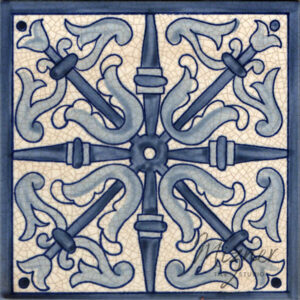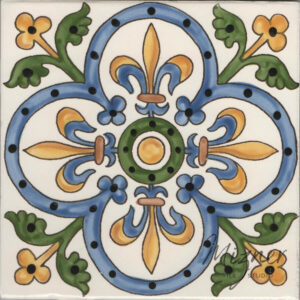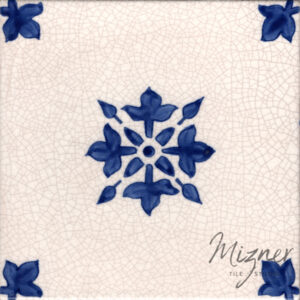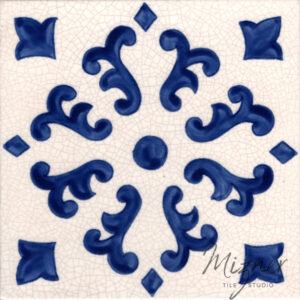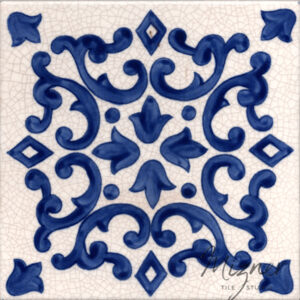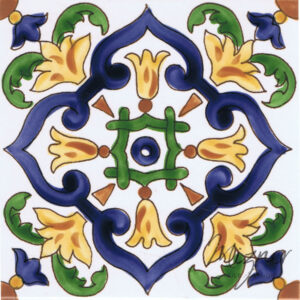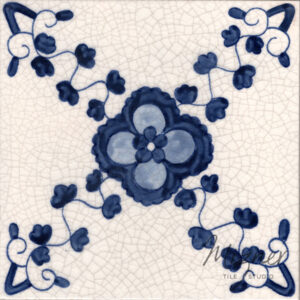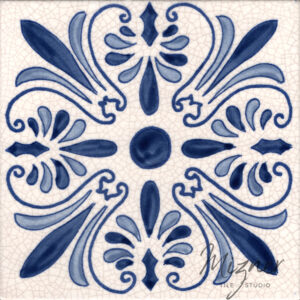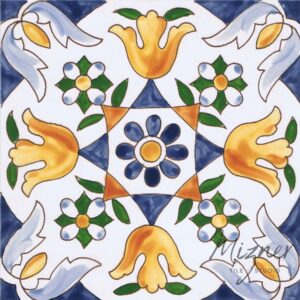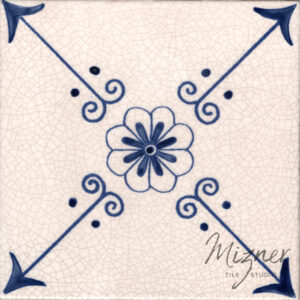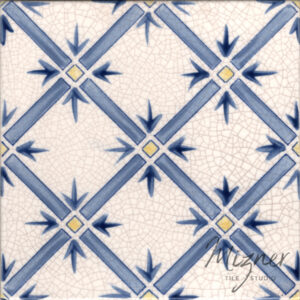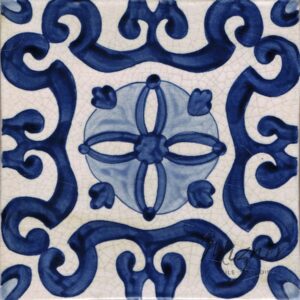Dutch Style Tile Collection
Dutch Style Tiles have their origins in the Low Countries of Europe including Belgium and the Netherlands were ruled by Spain in the 16th century.
As a result, the spread of Moorish majolica tin glaze tile from Italian and Spanish tilemakers to Dutch potters during that era was a logical expansion of the craftsmanship.
Tilemaking spread further north into Holland during the push for Dutch independence. Tilemaking factories in Holland included Harlingen and Makkum.
The blue and white motif influenced by Dutch trade routes to China and Chinese porcelain eventually became the dominant style in Holland. While huge ‘tile murals’ were often commissioned, many of the single tiles made in Holland were unique in their depiction of ‘single scenes’ featuring natural elements or Biblical moments.
Earlier Moorish-influenced designs more commonly involved multiple tiles placed together to form larger patterns.
Dutch tile was exported in great quantity throughout Europe in the 17th century. ‘Delftware,’ as it became known, inspired the British development in the 18th century of transfer printing onto tiles and other pottery featuring similar bucolic scenery of flowers, animals and landscapes, with Staffordshire pottery being among the most well-known.
Order a Sample Project Inquiry
-
HP-504 | Hand Painted Tile
-
HP-505 | Hand Painted Tile
-
HP-508 | Hand Painted Tile
-
HP-509 | Hand Painted Tile
-
HP-514 | Hand Painted Tile
-
HP-516 | Hand Painted Tile
-
HP-517 | Hand Painted Tile
-
HP-518 | Hand Painted Tile
-
HP-519 | Hand Painted Tile
-
HP-522 | Hand Painted Tile
-
HP-524 | Hand Painted Tile
-
HP-529 | Hand Painted Tile


